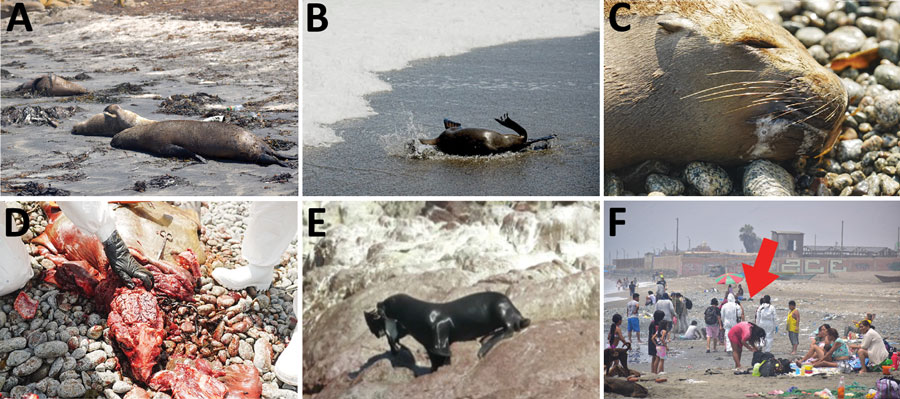Mass Mortality of Sea Lions Caused by Highly Pathogenic Avian Influenza A(H5N1) Virus
Víctor Gamarra-Toledo
1
, Pablo I. Plaza
1, Roberto Gutiérrez, Giancarlo Inga-Diaz, Patricia Saravia-Guevara, Oliver Pereyra-Meza, Elver Coronado-Flores, Antonio Calderón-Cerrón, Gonzalo Quiroz-Jiménez, Paola Martinez, Deyvis Huamán-Mendoza, José C. Nieto-Navarrete, Sandra Ventura, and Sergio A. Lambertucci
Author affiliations: Grupo de Investigaciones en Biología de la Conservación, Laboratorio Ecotono, INIBIOMA, Universidad Nacional del Comahue—CONICET, Bariloche, Argentina (V. Gamarra-Toledo, P.I. Plaza, S.A. Lambertucci); Museo de Historia Natural, Universidad Nacional de San Agustín de Arequipa, Arequipa, Peru (V. Gamarra-Toledo, R. Gutiérrez); Servicio Nacional de Áreas Naturales Protegidas por el Estado, Lima, Peru (R. Gutiérrez, G. Inga-Diaz, P. Saravia-Guevara, O. Pereyra-Meza, E. Coronado-Flores, A. Calderón-Cerrón, G. Quiroz-Jiménez, P. Martinez, D. Huamán-Mendoza, J.C. Nieto-Navarrete, S. Ventura); Asociación Convive Perú, Madre de Dios, Perú (G. Inga-Diaz)
Main Article
Figure

Figure. Sea lion deaths and investigation associated with outbreak of highly pathogenic avian influenza A(H5N1) in Paracas National Reserve, Peru, on the coastline, February 2023. A) Sea lion carcasses on the beach. B) Dying sea lion with ataxia. C) Dead sea lion with avian influenza clinical signs (whitish secretions). D) Sea lion necropsy showing a congestive brain. E) Sea lion trapping and eating a sick guanay cormorant, January 23, 2023. F) Field work sampling on a beach with a large number of bathers in the surroundings of infected carcasses. Red arrow indicates study staff wearing health protection equipment conducting field survey. Photograph credits: A, B, and D, Daniel Ampuero; C and F, Giancarlo Inga; E, Sandra Lizarme.
Main Article
Page created: October 30, 2023
Page updated: November 18, 2023
Page reviewed: November 18, 2023
The conclusions, findings, and opinions expressed by authors contributing to this journal do not necessarily reflect the official position of the U.S. Department of Health and Human Services, the Public Health Service, the Centers for Disease Control and Prevention, or the authors' affiliated institutions. Use of trade names is for identification only and does not imply endorsement by any of the groups named above.
